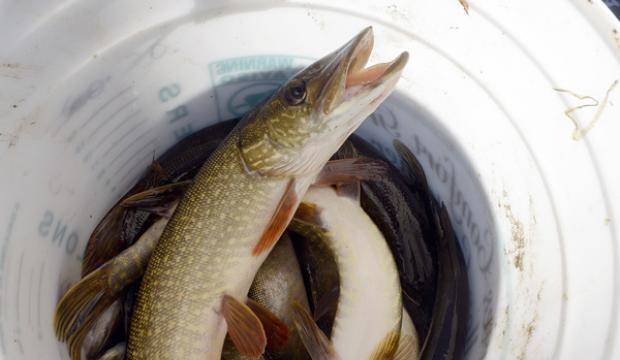Crawfish, “rock vomit” and sea Borgs: the Empire has written recently about a variety of invasive plants and animals around Juneau and in Alaska.
In an attempt to educate the public on the effect non-native species can have on Alaska’s environment, Gov. Bill Walker declared June 18-24 Invasive Species Awareness Week.
Though sometimes harmless, these non-native species can affect the balance of local plants and animals.
“Invasive species can outcompete native species, especially those that are important to us recreationally or commercially or for cultural reasons such as salmon,” said Tammy Davis, the Alaska Department of Fish &Game’s Invasive Species Program Coordinator in a Thursday phone interview.
Northern pike are one example. They’re “very effective” predators of growing salmon, Davis said, which have caused problems in Southcentral Alaska and are the target of ADF&G removal efforts.
In many cases, human activities are to blame for the spread of invasive species. Plants can transfer on the bottoms of boats and float planes. Insects hitch rides on shipping containers.
Davis had some tips to help stop the spread. When boating or fishing, remember to clean, drain and dry your boat, trailer and fishing equipment before you move between water bodies.
Check your pets for plant fragments and seeds after taking them outside and do not dump aquarium plants. This is believed to have led to a spread of elodea, which is choking out native plant species in the Kenai Peninsula.
Some popular gardening plants are actually invasive species, Davis said, and can choke out other plants. The Department of Natural Resources has a list of suitable alternatives to certain popular species at http://plants.alaska.gov/invasives/index.htm.
Above all, educate yourself on invasive species in your area and report any sightings to ADFG to 1-877-INVASIVE or at http://www.adfg.alaska.gov/index.cfm?adfg=invasive.main, where you can find more information about invasive species in your area.
Because of Alaska’s size, help from the public is invaluable, Davis said, as neither ADF&G nor DNR can monitor the whole state.

